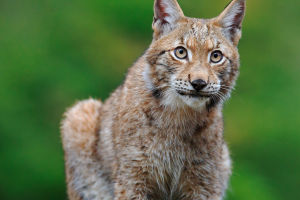The antelope is an even-hoofed animal that lives in arid environments such as grasslands, deserts, and mountains.
They are found in grasslands, deserts, and mountainous areas of Africa and Asia and are one of the most abundant wild herbivores in the world.
The antelope is graceful, with a body covered in short light yellow or brown hair, black stripes and spots on the back and flanks, large, bright eyes, and curved, moon-shaped horns, which are about 30-40 cm long, and short, small horns in females.
Antelopes are small, measuring about 1.2-1.5 m in length, 0.8-1 m in height at the shoulder, and weighing about 25-60 kg. Their long, slender bodies and long, slender limbs are adapted for running and escaping predators.
Like many bovids, antelopes have horns. Most antelopes have horns that grow from a young age and remain intact throughout their lives.
The shape and size of the antelope's horns vary considerably depending on the species to which they belong. In most species, male antelopes often fight with their horns over territory or mates.
The antelope feeds mainly on grasses and shrubs and can survive in arid environments, making it an important herbivore in the desert. Their eyesight and hearing are very sharp and they can quickly detect the presence of natural predators and escape.
Antelopes have a high economic value, and their skins and horns are important commodities that are widely used in some regions.
According to the species classification, antelopes can be divided into several species such as Tibetan antelope, Indian antelope, Baikal antelope, desert antelope, Tibetan antelope, Western Tibetan antelope, and Alaska antelope.
According to ecological habits, antelopes can be classified into steppe antelopes, desert antelopes, mountain antelopes, and other ecological types.
According to the shape of the horns, the antelope can be classified into the curved-horned antelope and the right-horned antelope.
According to the geographical classification, antelopes can be divided into two categories: African antelopes and Asian antelopes.
Small antelopes are distributed in Africa and Asia. The Arabian Peninsula is the habitat of the Arabian oryx and the fawn gazelle. India is the habitat of the Indian oryx, Indian gazelle, and Indian impala.
Some antelope populations are endangered, mainly due to human activities, illegal hunting, and habitat destruction.
The antelope is an important herbivore in deserts and plays an important ecological role in grassland and desert ecosystems. Protecting the antelope and its habitat is important for maintaining ecological balance and biodiversity.


